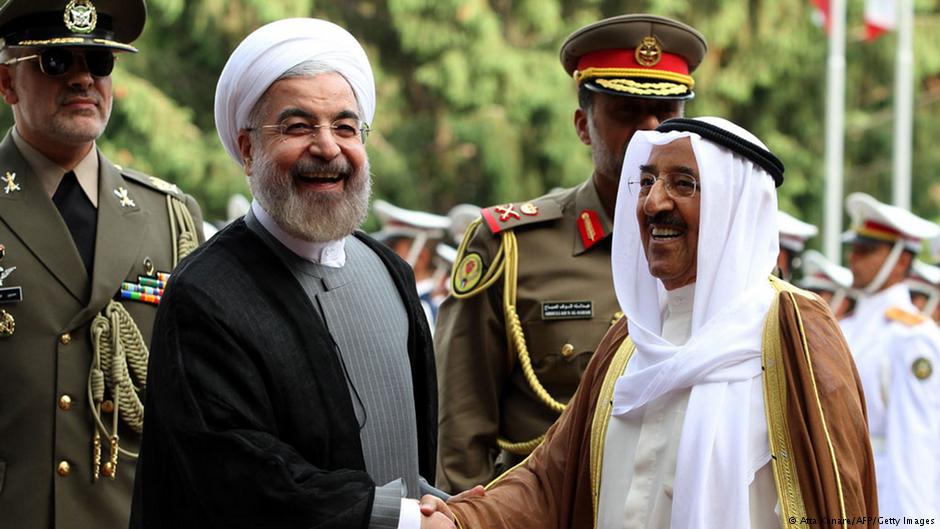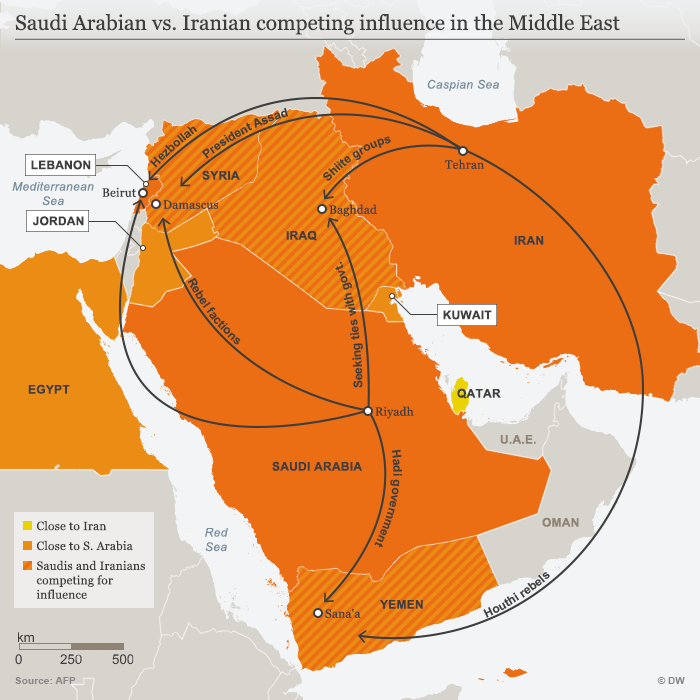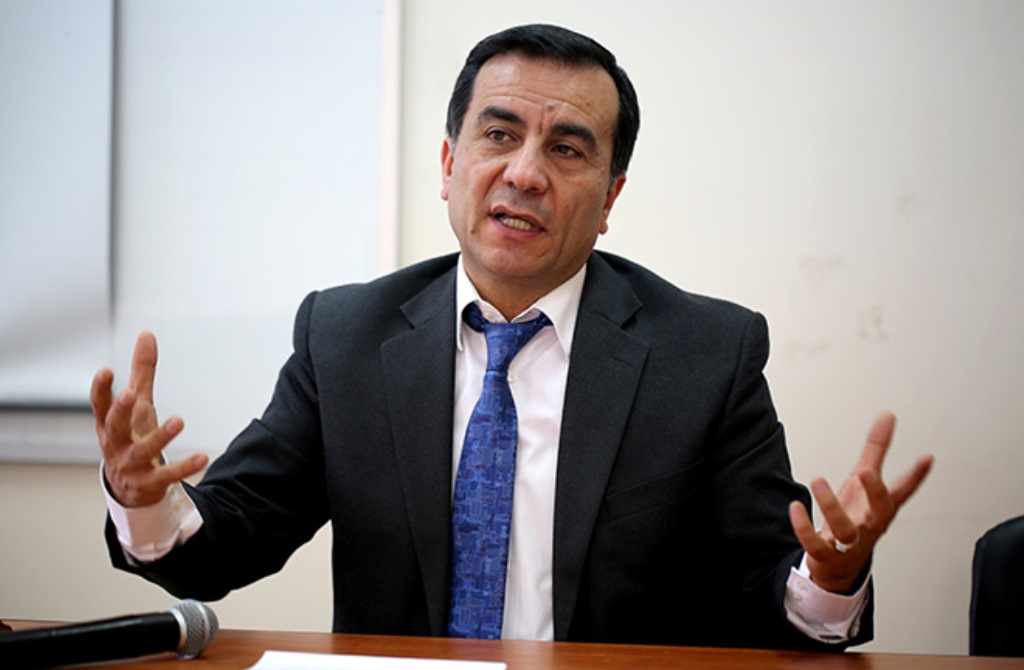End the Arab-Iranian tug-of-war

This article discusses four scenarios, which are not mutually exclusive, with regard to the relationship between the Arab world and Iran:
escalation of the current confrontations and conflicts to the level of wars that are regional, extensive and destructive;
continuation of the current confrontations and conflicts, which means ongoing mutual attrition and depletion of resources;
progressive cooling of relations and reciprocal containment;
resolution of the conflicts and a move towards comprehensive collective security within a regional framework.
For the foreseeable future, the first two possibilities look the most likely, although this does not necessarily rule out all prospect of the other two options. The likelihood of any of these four outcomes depends on the desire and capacity of the various political sides for a pragmatic solution, over the temptations of ideology and expansionism. They also depend on the emergence of a new rhetoric and a way of doing things in regional politics based on bargaining and betting on a future co-operation, predicated upon everyone making concessions for the benefit of the region.
The Arab world is witnessing collapse and increasing disintegration, with a number of its leading countries in the eye of the ongoing regional storm. Iran is involved in one way or another, at least since the US-led war on Iraq in 2003 and in what followed – in terms of the terrible wars which have laid waste to so much, be they in Syria, Iraq or Yemen. Through all these years, Iran has played and continues to play different roles in the crises and wars in Arab lands, and it is Arab countries and societies which have been paying the price and bearing the losses.

Amid the crises, alliances, proxy wars, obscure happenings, the shift in the balance of powers, including the withdrawal of international powers, the future of the Middle East and the wider region is opening up various possibilities. In the main, the prospect is for further deterioration, especially in light of fragmentation in the Arab world and the absence of firm, unifying positions, even within the Gulf Cooperation Council (GCC). The latter is the only regional Arab organisation that has maintained a reasonable degree of cohesion and internal solidarity.
Geography is the people’s fate
Our basic contention is that it’s not possible to change regional geography. Iranian-Arab co-existence is inevitable and eternal, but we can change the history and the politics. Indeed, it’s in the Arab and the Iranian interest to end the conflict and to move towards co-operation and regional security. Maintaining the conflict situation only means further wastage of resources and further destruction.
When approaching the choices before us, it is important, on the Arab side, that we try to understand Iran and what it wants, as well as what the Gulf States want. In the first place, Iran has a multitude of political and ideological identities; it is not a single monolithic bloc. The first is the religious identity of the state, driven by the Shia imperative, controlled by the Revolutionary Guards and characterised by a sweeping desire for expansion and influence. It is this identity which antagonises the Arabs and other regional neighbours, of course, just as it provokes a religiously Salafist response, something that is bound to reinforce sectarian divisions.The second is the variously intransigent Persian nationalist identity, the main characteristic of which is its antagonistic relationship with the Arabs and its other neighbours. It has an inflated imperialist tendency, and this identity converges with the religious one in terms of expansion and extension of its regional influence.
The third Iranian identity arises from and revolves around the concept of the nation state. This identity functions and exists according to the laws of nation states intent on looking out for their own interests and strategies; it therefore depends on political pragmatism. It offers the best hope of achieving regional co-operation founded upon common interests.
These three identities are entangled in a complex and dynamic relationship, competing in some areas and converging in others, but not necessarily in sync on all policies or at all times. There is a constant tension between the identity of the nation state and the other two identities. Moreover, each of these ʹIran-sʹ has an active element in the political and military hierarchy. Overseas, these ʹIran-sʹ function according to what seems to be a division of labour in foreign policy, regionally and internationally, but not necessarily in an organised and controlled fashion.
The importance of mutual relations between nation states
From an Arab perspective, the desire should be to deal with Iran as a nation state and with internal parties who espouse this ʹIranʹ, at the expense of an expansionist and imperialist Iran, be it religious or Persian. The development and consolidation of Iran as a nation state and its taking root in the face of the other identities is a basic requirement for the extension of regional co-operation.
Iran’s two other identities, the religious and the imperialist, do not know what they really want, aside from big slogans and a sense of glory and superiority over others. On the other hand, Iran as a nation state is more rational and more aware of what it wants in terms of security, stability, economics and development.
We can translate the latter through regional co-operation and by Iran playing an active role in the region, without seeking undue influence and hegemony. Such goals are legitimate, and it happens that the Arab states and the GCC have the same goals themselves.
The same can be said about the designation and identity of the Gulf states and there is no ambiguity here. In contrast to Iran, these states define themselves and their political identity as based clearly and strictly on the nation state concept. There is neither an expansionist ideology nor a religious or nationalist one. Jihadist and non-Jihadist Salafist movements operate against Arab nation states most of the time and more often than not they attack them.As for Arab nationalism, it has had little or no effect on the political identity of these states. They know full well that they do not wish to confront a three-dimensional Iran: Shia, nationalist and a nation state. Not to mention the fact that there is an imbalance between them and Iran in terms of military – and maybe nuclear – power.
This doesn’t mean that the balance of military power is resolutely in Iran’s favour, however. Decades of military and economic sanctions have worn down Iran’s military establishment as well as its economy. But the short of it is that the potential exists to engage in long-term wars of attrition which would be detrimental to both sides.
For the above reasons, it is important to push Iran and the Arabs towards mutual relations between nation states, rather than between nation states and an imperial expansionist state. Whilst this might sound far-fetched and utopian, it is, in essence, politic, pragmatic and possible; indeed it offers the only way we can spare the region total and long-term destruction.
Abandon claims to dominion
At the heart of this scenario is mutual recognition of sovereignty and the establishment of economic relations, which would contribute to stability and development in the Gulf and in Iran. Under-development and economic collapse are bound to give rise to radical and extremist policies that are mutually destructive.

It is not in the interest of the Arabs to have a nation state of Iran that is internally overstretched, economically destroyed and prone to extremist and expansionist tendencies. Equally, it is not in Iran’s interest to live beside Arab neighbours whose lives have been devastated in Iraq, the Gulf and Yemen, because this also means breeding religious and sectarian extremism ad infinitum. It is in the interest of both sides to move towards the logic of the nation state in order to rein in extremism and to pursue joint interests with their neighbours.
The current animosity between Iran and the Arabian Gulf is not on a par with the German-French or the German-British enmity in the wake of the First or Second World Wars, which resulted in more than a hundred million dead. Notwithstanding this – and only a few years after the end of the two wars – these very states engaged in regional economic and security arrangements based on shared interests, on making major concessions and on abandoning claims to and aspirations of influence and dominion.
The result was the establishment of the largest and most effective economic bloc in the world, namely the European Union. This European lesson offers us an enticing model worthy of deep consideration in order to transform enmity into co-operation. The Arab states and Iran can take one of two paths: they can keep going towards mutual destruction or embark upon co-operation.
Khaled Hroub
© Qantara.de 2018
Translated from the Arabic by Chris Somes-Charlton